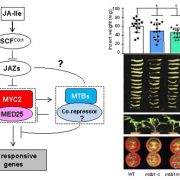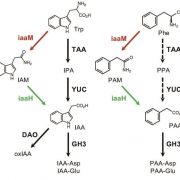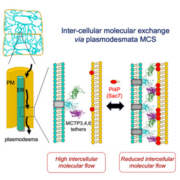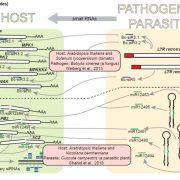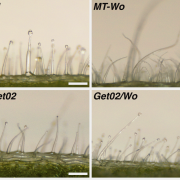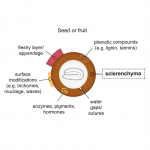Review. Under siege: virus control in plant meristems and progeny (Plant Cell)
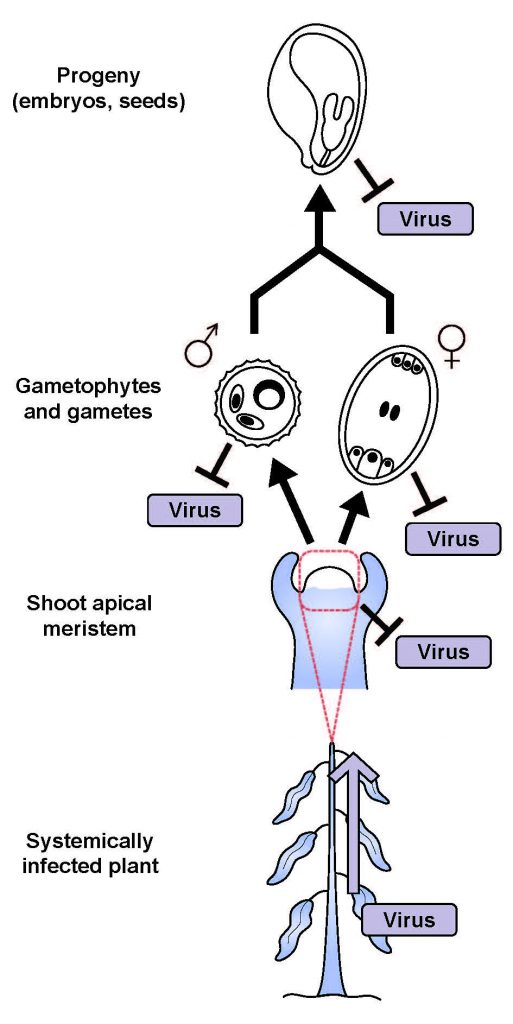 Perhaps, when our lives have been turned upside down by a human pathogenic virus, it’s easy to overlook the fact that plants too suffer from viral infections; but of course, they do. (And of course, famously, viruses were first discovered in plants). Although it is difficult to cure a plant of a virus infection, horticulturalists have long known that the plant meristem is often virus-free (leading to the common method of meristem culture to produce virus-free plants) and often the seeds are too. Here, Bradamante et al. review the mechanisms through which meristems and ultimately seeds exclude viruses. These include blocking the movement of viruses through plasmodesmata, the tiny gateways that connect plant cells, and RNA interference machinery that prevents viruses from replicating. However, sometimes viruses overcome these defense strategies and invade meristematic and eventually reproductive tissues. The authors discuss strategies through which the plant defends against viral infection and movement, how some viruses overcome those defenses, and how in some cases plants can recover from meristem invasion. The authors also suggest additional avenues of research, observing, “The real and potential perils of virus seed transmission in staple crop species and the commercial relevance of maintaining virus-free plant material should challenge investigators to better understand the meristematic and transgenerational antiviral barriers deployed by plants.” (Summary by Mary Williams @PlantTeaching) Plant Cell 10.1093/plcell/koab140
Perhaps, when our lives have been turned upside down by a human pathogenic virus, it’s easy to overlook the fact that plants too suffer from viral infections; but of course, they do. (And of course, famously, viruses were first discovered in plants). Although it is difficult to cure a plant of a virus infection, horticulturalists have long known that the plant meristem is often virus-free (leading to the common method of meristem culture to produce virus-free plants) and often the seeds are too. Here, Bradamante et al. review the mechanisms through which meristems and ultimately seeds exclude viruses. These include blocking the movement of viruses through plasmodesmata, the tiny gateways that connect plant cells, and RNA interference machinery that prevents viruses from replicating. However, sometimes viruses overcome these defense strategies and invade meristematic and eventually reproductive tissues. The authors discuss strategies through which the plant defends against viral infection and movement, how some viruses overcome those defenses, and how in some cases plants can recover from meristem invasion. The authors also suggest additional avenues of research, observing, “The real and potential perils of virus seed transmission in staple crop species and the commercial relevance of maintaining virus-free plant material should challenge investigators to better understand the meristematic and transgenerational antiviral barriers deployed by plants.” (Summary by Mary Williams @PlantTeaching) Plant Cell 10.1093/plcell/koab140


